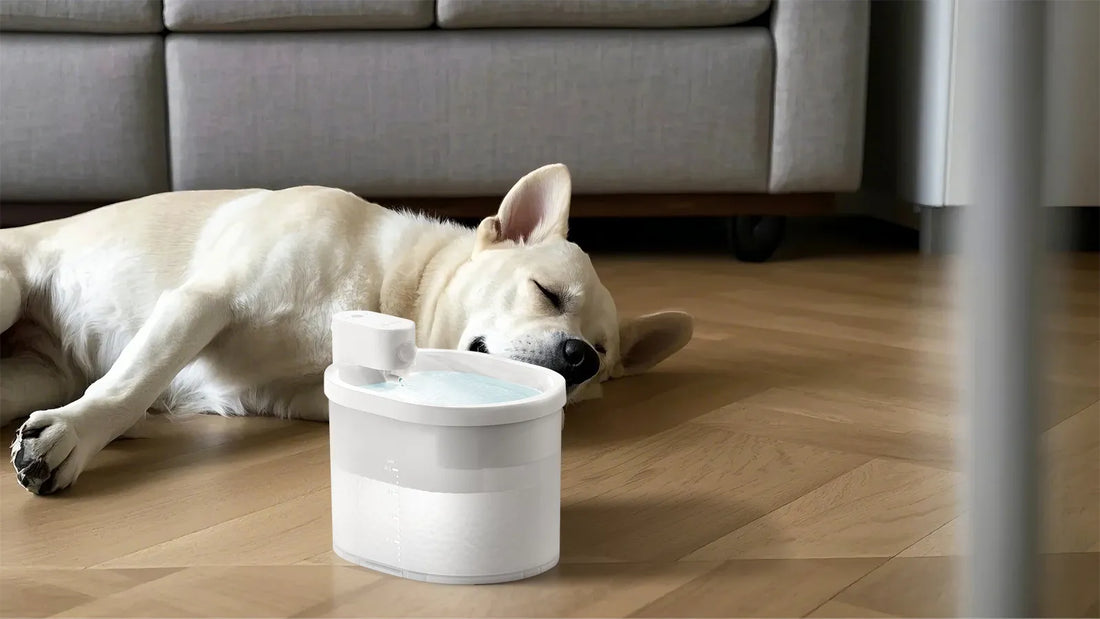Keeping your dog's paws clean is an essential part of their overall health and well-being. Whether your furry friend has been out for a walk, playing in the park, or simply exploring the backyard, their paws can pick up dirt, debris, and even harmful substances. Regular paw cleaning not only keeps your home cleaner but also prevents potential health issues such as infections or irritations. In this guide, we'll walk you through everything you need to know about how to clean dog paws effectively and safely.
Why Cleaning Dog Paws is Important
Dog paws are constantly exposed to various elements, including dirt, mud, chemicals, and allergens. Over time, these substances can accumulate and cause discomfort or even harm to your pet. For instance, chemicals like de-icing salts or pesticides can irritate the skin or be toxic if ingested during grooming. Additionally, debris stuck between the paw pads can lead to cuts or infections. Regular cleaning helps remove these hazards and keeps your dog's paws healthy and comfortable.
Essential Supplies for Cleaning Dog Paws
Before you start, gather the necessary supplies to make the process smooth and efficient. Here's a list of items you'll need:
- A shallow bowl or basin
- Lukewarm water
- Mild dog-friendly shampoo or paw wash
- A soft towel or cloth
- A paw brush or soft-bristled toothbrush
- Pet-safe wipes (optional)
- Moisturizing balm or paw wax (optional)
Step-by-Step Guide to Cleaning Dog Paws
Follow these steps to clean your dog's paws thoroughly and gently:
Step 1: Prepare the Cleaning Area
Choose a comfortable and easy-to-clean spot for the process. A bathroom or laundry room works well. Fill a shallow bowl or basin with lukewarm water. Avoid using hot water, as it can irritate your dog's sensitive paws.
Step 2: Rinse the Paws
Gently place your dog's paw into the water and swirl it around to loosen dirt and debris. If your dog is nervous, start with one paw and gradually work your way to the others. Be patient and reassuring throughout the process.
Step 3: Apply Paw Wash or Shampoo
Use a mild dog-friendly shampoo or paw wash to clean the paws. Apply a small amount to the paw and gently massage it in, paying attention to the spaces between the toes and the paw pads. A paw brush or soft-bristled toothbrush can help remove stubborn dirt.
Step 4: Rinse Thoroughly
Rinse the paw with clean water to remove all traces of shampoo or wash. Leftover residue can cause irritation or dryness, so ensure the paw is completely clean.
Step 5: Dry the Paws
Use a soft towel or cloth to gently dry the paws. Make sure to pat them dry rather than rubbing, as rubbing can cause discomfort. If your dog tolerates it, you can also use a hairdryer on a cool setting to ensure the paws are completely dry.
Step 6: Apply Moisturizer (Optional)
If your dog's paws are dry or cracked, apply a pet-safe moisturizing balm or paw wax. This helps keep the paw pads soft and prevents further cracking.
Tips for Making Paw Cleaning Easier
Cleaning your dog's paws doesn't have to be a stressful experience. Here are some tips to make the process smoother for both you and your pet:
- Start paw cleaning routines when your dog is young to help them get used to it.
- Use positive reinforcement, such as treats or praise, to create a positive association with paw cleaning.
- Be gentle and patient, especially if your dog is nervous or resistant.
- If your dog has long hair between their paw pads, consider trimming it to reduce the accumulation of dirt and debris.
Common Mistakes to Avoid
While cleaning your dog's paws, avoid these common mistakes to ensure their safety and comfort:
- Using human shampoo or harsh chemicals, which can irritate your dog's skin.
- Neglecting to dry the paws thoroughly, as moisture can lead to bacterial or fungal infections.
- Rushing the process, which can cause stress or discomfort for your dog.
- Ignoring signs of irritation or injury, such as redness, swelling, or limping.
When to Seek Veterinary Help
While regular paw cleaning is important, there are times when professional help is needed. If you notice any of the following signs, consult your veterinarian:
- Persistent redness, swelling, or discharge from the paws.
- Cracks or sores that don't heal with home care.
- Limping or reluctance to walk, which could indicate an injury.
- Signs of an allergic reaction, such as excessive licking or chewing of the paws.
By following these steps and tips, you can ensure your dog's paws stay clean, healthy, and comfortable. Regular paw cleaning is a simple yet effective way to show your furry friend how much you care. So, the next time your dog comes in from their adventures, take a few minutes to give their paws the attention they deserve. Your dog will thank you with wagging tails and happy paws!














